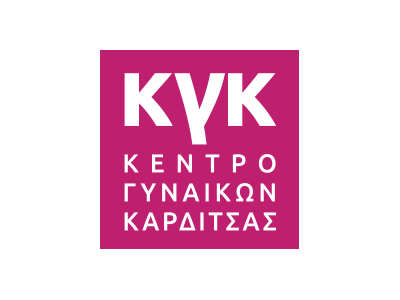
Human Rights, Women's Rights, Children's Rights
Human rights are core standards acknowledging the need for dignified life for all people in the world. The Universal Declaration of Human Rights, adopted by the UN General Assembly on 10 December 1948, is a revolutionary document and continues to serve as the most important global human rights instrument. It emphasizes that freedom, justice and peace in the world are based on the recognition of the dignity and worth of human beings and the equality of men and women.
These two core values define many others that serve as a fundamental principle of coexistence for people and societies alike. Some of them are:
• Freedom
• Respect for others
• Non-discrimination
• Tolerance
• Justice
• Responsibility
Because of their vulnerability in society and their greater exposure to abuse, discrimination and violence and human rights deprivation, women and children are subject to special care and legal support. The rights of women and children affect the protection of their physical integrity and autonomy of will - not to be subject to emotional, physical and sexual abuse, to live in a safe and secure environment, to be able to freely express their desires, to realize their potential. The protection of these rights is a guarantee for social progress and the prosperity of societies, so it is regulated by a number of international documents. We will briefly mention some of the most important ones.
The UN Convention on the Rights of the Child
The document obliges states to provide special guarantees and care, including appropriate legal protection for children, due to their physical and mental immaturity and vulnerability.
Article 2 regulates the guarantee of the rights of every child without any discrimination, regardless of race, color, sex, language, religion, political or other opinion, national, ethnic or social origin, property status, disability, birth or other status of the child or his or her parents or legal guardians. It is the responsibility of states to care for the well-being of children and to protect them, being guided in all their actions by their highest interests (Art. 3). The right to life, as well as the possibilities for survival and development, are fundamental to the Convention (Art. 6), as well as the right of children to express their views freely on all matters concerning them, which should be given importance, corresponding to the age and maturity of the child (Art. 12). A priority of the Convention is the protection of children from all forms of physical or mental violence, assault or abuse, neglect or negligence, abuse or exploitation, including sexual offenses, while in the care of their parents or one of them, of their legal guardian or any other person to whom they are entrusted (Art. 19). The right to education is considered not only in the context of accessibility, availability, comprehensiveness, elimination of ignorance and illiteracy, but also in the facilitated access to scientific and technical knowledge and modern teaching methods.

Convention on the Elimination of All Forms of Discrimination against Women
Building on the Charter of the United Nations and the belief in fundamental human rights, in the dignity and worth of the human person and in the equality of men and women, the Convention provides guidelines for changing the social and cultural patterns of behavior of men and women in order to achieve eradication of prejudices and elimination of customs that are based on the idea of the inferiority or superiority of one of the sexes or the stereotyping of the role of men and women (Article 5 a). Special attention is also paid to the provision of family upbringing, which includes a correct understanding of motherhood as a social function and recognition of the common responsibility of men and women in the upbringing and development of their children, provided that in all cases the interests of children are predominant (Article 5 b). The document highlights states' commitments to eliminate discrimination against women in several key areas:
• Participation in the political and public life of the country - the right to vote, to be elected to public bodies, to hold public office, to participate in decision-making (Article 7).
• Access to quality training programs at all stages of education, opportunities for free orientation in choosing a profession or specialty, equal rights in receiving scholarships and education grants, as well as special measures to limit the number of girls who drop out of school (Art. 10).
• Employment through equal employment opportunities, free choice of profession and opportunity for career advancement, the right to equal pay for equal work (Article 11).
• Access to medical care (art. 12), the right to family benefits and financial crediting, as well as to participation in cultural life (art. 13).
• Equal rights within the marital relationship, including free choice of partner, equal rights and obligations as parents, opportunity to combine family commitments with education and realization, equality between partners in possession, acquisition, management, use and disposal of property (Article 16).
Committee on the Elimination of Discrimination against Women (CEDAW), which monitors the implementation of the Convention
The Committee on the Elimination of Discrimination against Women (CEDAW) is the body of independent experts that monitors the implementation of the Convention on the Elimination of All Forms of Discrimination against Women. The CEDAW Committee consists of 23 women's rights experts from around the world. For the first time, after the democratic changes, Bulgaria has a CEDAW expert – Ms. Genoveva Tisheva – with a term of office 2019-2022.
There is an Optional Protocol to the Convention on the Elimination of All Forms of Discrimination against Women, which includes:
• Communication procedure - entitles individuals and groups of women to complain to the Committee on the Elimination of Discrimination against Women for violations of the Convention.
• Investigation procedure - enables the Committee to conduct investigations into serious and systematic violations of women's rights.
General Recommendation № 36 (2017/ UN CEDAW) UN on the right of girls and women to education
Developed by Mrs Genoveva Tisheva, a CEDAW expert
The right to education and equality in education is an integral part of women's rights. The UN Special Rapporteur on the right to education stated that "..... the right to education for women and girls ... is essential to eliminate all forms of discrimination that women and girls suffer from". Thus, this right can be called a "protective" right, which is in the category of social, economic and cultural rights and is included in many international documents. It contains many other rights, such as the right to receive or have access to education; the right to choose education; the right to equality in education. In short, education must be available, accessible, affordable, adequate to needs and adaptable to different situations.
The right not to be discriminated in education is a specific right. Unlike gender-based violence against women or climate change and the reduction of the impact of natural disasters, which are not explicitly regulated in the Convention on the Elimination of All Forms of Discrimination against Women (CEDAW), but which are identified by the CEDAW as falling within the scope of the Convention (the right to freedom from discrimination, the right to health, the right of women in rural areas), Article 10 of the Convention explicitly obliges states to take appropriate measures to eliminate discrimination in education between women and men and between girls and boys. Art. 10 regulates in detail the following:
|
"States Parties shall take all appropriate measures to eliminate discrimination against women in order to ensure to them equal rights with men in the field of education and in particular to ensure, on a basis of equality of men and women: (a) The same conditions for career and vocational guidance, for access to studies and for the achievement of diplomas in educational establishments of all categories in rural as well as in urban areas; this equality shall be ensured in pre-school, general, technical, professional and higher technical education, as well as in all types of vocational training; |

On 16 November 2017, the CEDAW Committee finalized and published General Recommendation № 36 on the right of girls and women to education. It begins with a strong emphasis on education and its „pivotal transformative and empowering role in promoting human rights values and is recognized as the pathway to gender equality and women’s empowerment”
Based on statistics on school drop-outs and literacy data, the Committee notes that girls and women are initially disproportionately discriminated in terms of access, opportunities for regular school attendance, treatment, educational outcomes and career opportunities. The Committee links the recommendation to Objective 4 of the Sustainable Development Goals, which seeks to "ensure inclusive and equal quality education and promote opportunities for lifelong learning."
General recommendation № 36 is organized around 3 main topics:
• access to education;
• equal treatment and opportunities in education;
• how education affects rights such as the right to gender equality outside the educational sphere, emphasizing that even if men's educational attainment is lower, they occupy better positions.
|
Here are some of the main recommendations related to state obligations under Art. 10 of the Convention outlined in this document: • to provide universal, free and compulsory education up to the level of secondary education for all and to eliminate the unbalanced distribution of budget funds for the education of vulnerable and marginalized groups of girls; |
Beijing Declaration and Platform for Action
The 1995 document is considered to be the most comprehensive global policy framework and action plan for women's empowerment and gender equality in the world. The Platform for Action covers 12 priority areas, for each of which strategic objectives have been identified, as well as actions to be taken by governments and other stakeholders at national, regional and international levels. The strategic areas in which there are critical issues for the progress and development of women are:
1. Women and poverty (social exclusion) - The strategic goal in this area is to create specific gender sensitive policies and strategies that take into account the needs and constraints of women living in poverty and social exclusion.
2. Women and education - Overcoming illiteracy among women and ensuring equal access to education. Creating conditions for lifelong learning for girls and women.
3. Women and health - Improving access to adequate, affordable and quality lifelong health. Strengthening women's health prevention programs.
4. Violence against women - Take comprehensive measures to combat violence against women. Combating trafficking in women and providing support to victims of prostitution and trafficking violence.
5. Women and armed conflict - Protection of women living in armed or other conflicts or under foreign occupation. Limiting human rights violations in conflict situations. Providing protection, support and training to refugee women.
6. Women and the economy - Promoting women's economic independence, including their access to employment, appropriate working conditions and control of economic resources. Providing training, information and access to low-income women's markets. Elimination of labor segregation and all forms of discrimination in employment.
7. Women in power and decision-making - Ensuring equal access and full participation of women in power structures and in decision-making.
8. Institutional mechanisms for the advancement of women - Gender mainstreaming in legislation, government policies, programs and projects.
9. Women's human rights - Ensuring equality and protection against discrimination in law and practice.
10. Stereotyping of women and inequality in their access to communication systems and especially the media - Increasing women's opportunities for participation and expression in public space and their access to decision-making processes in the media and new communication technologies. Ensuring a balanced and non-stereotypical image of women in the media.
11. Women and the environment - Active involvement of women at all levels in environmental decision-making processes. Integrating gender issues and gender perspectives into sustainable development policies and programs.
12. Girls - Eliminate all forms of discrimination, violence and exploitation against girls. Increasing their participation in social, economic and political life. Increasing the role of the family in improving the situation of girls.

European policies to promote gender equality
The European Union has made significant progress in the field of gender equality in recent decades. This is the result of:
• equal treatment legislation;
• the integration of the principle of gender equality in all other policies;
• specific measures for the advancement of women.
Equality between women and men is one of the fundamental values set out in Art. 8 of the Treaty on the Functioning of the European Union.
The guarantee of equality between women and men in all areas, including employment, labor and remuneration, is also regulated in Art. 23 of the Charter of Fundamental Rights of the European Union. In the same document, Article 21 states “Any form of discrimination based in particular on sex, race, color, ethnic or social origin, genetic characteristics, language, religion or belief, political or other opinions, belonging to national minority, property status, birth, disability, age or sexual orientation shall be prohibited. "
Given its leading role in the protection of human rights, the Council of Europe has adopted the Convention on Preventing and Combating Violence against Women and Domestic Violence (the "Istanbul Convention", named in this way because of the name of the place where it was open for signature). This is considered to be the most comprehensive international legal instrument for preventing and combating violence against women and domestic violence as human rights violations. It notes that „violence against women is a manifestation of historically unequal power relations between women and men, which have led to domination over, and discrimination against, women by men and to the prevention of the full advancement of women” and emphasizes the structural nature of violence against women as gender-based violence, which forces women to be subordinated to men.
The purposes of this Convention are to:
a) protect women against all forms of violence, and prevent, prosecute and eliminate violence against women and domestic violence;
b) contribute to the elimination of all forms of discrimination against women and promote substantive equality between women and men, including by empowering women;
c) design a comprehensive framework, policies and measures for the protection of and assistance to all victims of violence against women and domestic violence;
d) promote international co-operation with a view to eliminating violence against women and domestic violence;
e) provide support and assistance to organisations and law enforcement agencies to effectively co-operate in order to adopt an integrated approach to eliminating violence against women and domestic violence.
The Istanbul Convention requires states that have ratified it to adopt a comprehensive set of measures to combat all forms of violence against women and domestic violence. Any provision in the Convention is intended to prevent the occurrence of violence, to assist victims and to ensure that perpetrators are brought to justice. The Convention requires criminalization and legal sanctions for various forms of violence against women, such as domestic violence, harassment, sexual harassment and psychological violence.
 The Convention clearly states that violence against women and domestic violence cannot be considered private matters and that states have a duty to prevent violence, protect victims and punish perpetrators through the adoption and implementation of comprehensive and integrated policies. In addition to legal obligations, the Convention also sends an important political message to society as a whole that violence against women and domestic violence are unacceptable. Its mission is to shed light on the real situation of many women and girls who are victims of violence, to raise awareness and to lead to a change in ways of thinking in the long run.
The Convention clearly states that violence against women and domestic violence cannot be considered private matters and that states have a duty to prevent violence, protect victims and punish perpetrators through the adoption and implementation of comprehensive and integrated policies. In addition to legal obligations, the Convention also sends an important political message to society as a whole that violence against women and domestic violence are unacceptable. Its mission is to shed light on the real situation of many women and girls who are victims of violence, to raise awareness and to lead to a change in ways of thinking in the long run.
The Convention places the obligation to prevent and combat violence against women in the broader framework of achieving equality between women and men. In this way, its authors refer to the relations between women and men, their roles and inherent functions in society, which is why they find it important to propose a definition of the term gender. This term is not intended to replace the biological definition of "sex" or the terms "women" and "men", but to point out the extent to which inequalities, stereotypes and, as a consequence, violence, do not stem from biological differences social constructions, in other words, from attitudes and perceptions of what women and men should be and should be in society. The Convention contains a number of provisions that challenge perceptions of women's inferiority to men and the roles and behaviors that women and men should play in the private and public spheres. It opposes attempts to:
• to imprison women and men in traditional roles, thus limiting their personal, educational and professional development and their life opportunities in general;
• to justify and uphold patriarchy, the historical power relations of men over women, and sexist attitudes that impede the progress of gender equality;
• to oppose the right of women to live a life without violence.
In 2020, humanity faced a new crisis – the COVID-19 pandemic – which brought new challenges in protecting the rights of children and especially girls. The outbreak of COVID-19 deeply affected the environment in which children and adolescents grow and develop from early childhood to late adolescence. The lives of children of all ages and in all countries have changed dramatically. They have been affected by the socio-economic consequences of the crisis and, in some cases, by the mitigating restrictive measures introduced, which are still difficult to assess to what extent the benefits have not been harmed.

The ongoing crisis could increase the number of children living in poor households by up to 117 million by the end of 2020, according to the latest analysis by UNICEF and Save the Children. Immediate loss of income often means that families are less able to afford basic necessities such as food and clothing, have limited access to health care and education, and are at greater risk of violence, exploitation, and abuse. The crisis has worsened access to education for children. Schools were closed in 188 countries, affecting more than 1.6 billion children and young people. Not all countries have managed to introduce distance learning, and among low-income countries the share is only 30%. While the available evidence suggests that the direct impact of COVID-19 on infant and adolescent mortality is very limited, it is estimated that child survival will be permanently affected by the effects of the pandemic. According to a study of 118 low- and middle-income countries, an additional 1.2 million deaths of children under the age of five could occur in just six months. With regard to violence, a number of factors related to social exclusion measures are likely to lead to an increased risk for children due to growing household tensions, stress, economic insecurity, job loss and social exclusion. Children may also be more likely to witness domestic violence.
Girls, especially those coming from marginalized groups, will be particularly affected by the secondary effects of COVID-19*, because of the risk of becoming victims of double discrimination based on age and gender. Measures to limit the spread of the disease have exacerbated existing inequalities and increased girls' drop-outs because they have less access to the technical devices and internet needed for distance learning than boys. The expert predicts that the economic downturn, unemployment and school closures will increase sexual violence, exploitation, trafficking, child labor and harmful practices in local communities, such as forced marriages, early pregnancy, and genital mutilation. All these negative trends will affect young girls the most. This group is more dependent on medical services, sexual and reproductive health programs, social services, employment agencies. Difficult access to these support systems during the pandemic has significantly increased the risk to girls' lives and health.
*Plan International / John von Ahlen „COVID-19 The impact on girls”
Related Articles
As young children develop, they begin to explore the meanings of being a boy or a girl. They learn about their roles by browsing…
Fairy tales and the world of the child. How to use fairy tales to introduce the topic of gender equality in the education…
Gender equality implies equal rights for women and men, girls and boys, as well as equal access to rights, resources, opportunities…









